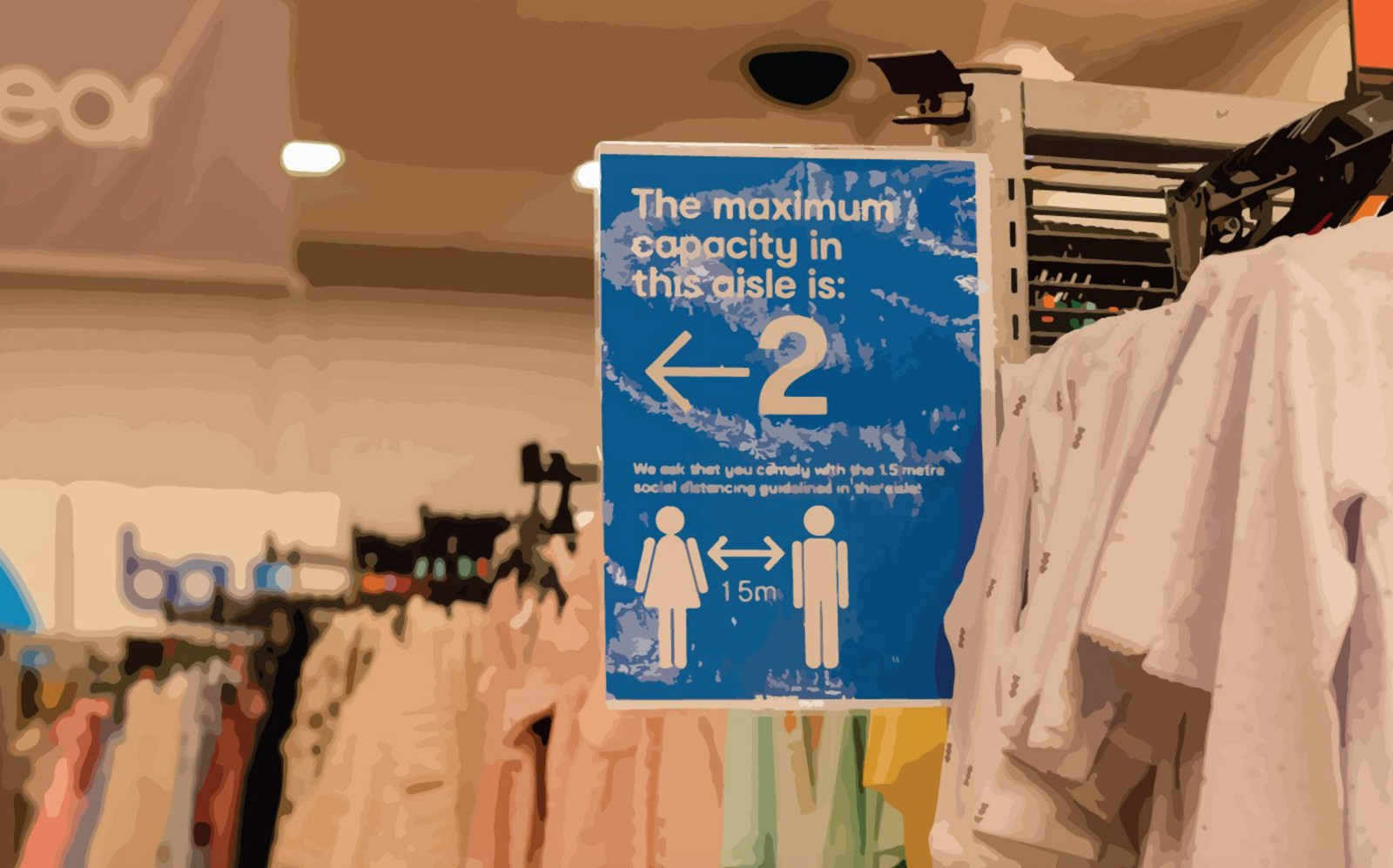 Retail’s After Life: What’s Left for Brick and Mortar Properties Post Apocalypse?
Retail’s After Life: What’s Left for Brick and Mortar Properties Post Apocalypse?
Trending
Will the Pandemic Change How Retail Properties Are Valued?

About a month ago, I heard through the grapevine that a well known real estate investment firm was “marking all of its retail properties to zero,” essentially, claiming they were worth nothing. My first thought was, “How could physical property and land be worth nothing?” My source refused to name the company and the person from the company who shared this information, making the possibility of actually answering my question highly unlikely, but I asked anyway. The response I got was a generalized assumption that the properties had so much debt that this canceled out the value of the physical structure and land. So, over the next few weeks, I tried to figure out if something like this could actually happen. Could all of the retail properties in the portfolio of a prominent firm actually become worthless?
According to my source, these properties were either refinanced or used as collateral to borrow against, and the amount of money that was issued at the time of the loan or refinance is more than the amount the property is actually worth today. The primary reason the valuation has decreased so dramatically is because of COVID-19 and its subsequent effects on retailers’ ability to pay rent, which has been well-documented the last few months, but it’s not the only reason. I spoke with Noah Isaacs, Co-Founder at Bowery Valuation, who told me, “the name of the game in retail is foot traffic.” He explained, “Having fewer people outside is definitely going to be detrimental to retail values because really a tenant’s capacity to pay rent is a function of the sales per square foot that they can drive. So when sales go down, it’s just going to be harder for landlords to charge higher retail rents.” But we know that retail has been suffering long before COVID-19.
“E-commerce is—and has been for a long time—eating into the brick and mortar retail space,” said Isaacs. “Vacancy rates in New York City for retail have been increasing over the last two years. And oftentimes, it can be more profitable for a landlord to keep a retail space vacant than to lease it for what they believe is, quote on quote, below market value.” The reason for this, Isaacs explained, is because, from the owner’s perspective, they can borrow up to 75 percent against the value of the property, and “banks typically lend the pro forma income, not necessarily the in-place income.” This creates a huge problem since so many retail properties are not meeting their income projections. Isaacs uses New York City as an example where “you have a retail property that’s trading for, let’s just call it, fifteen times net operating income, you’re able to actually take retail rent on that, even if you’re not collecting it in-place.” According to Isaacs, this is the reason that vacancy rates have been increasing for the last several years, but rental rates have remained relatively flat.
Going back to my initial question about the portfolio of said retail properties from said real estate firm. If these properties were to be sold today, their value would not be enough to cover the debt against them. Based on the information from Isaacs, I would have to assume that they decreased in value by at least 25 percent because the debt against them was based on 75 percent of projected income. Now, this doesn’t necessarily make them worthless. It just makes them worthless, if sold, to their current owner(s). But, we also know that foot traffic (and therefore sales per square foot) have drastically decreased in certain retail sectors throughout the country so is it fair to assume that most “non-essential” retail property owners are in a similar position. If they were to sell their properties based on current in-place net operating income, they could have a hard time covering the debt against them. According to Isaacs, that’s exactly why properties aren’t trading right now, “A lot of investors, a lot of lenders, want things to stabilize. We are seeing that in the number of transactions on the market today, or lack of.”
Read more
 Retail’s After Life: What’s Left for Brick and Mortar Properties Post Apocalypse?
Retail’s After Life: What’s Left for Brick and Mortar Properties Post Apocalypse?
 Buyers of Distressed Debt Inject Flexibility Into Pandemic-Stricken Real Estate Markets
Buyers of Distressed Debt Inject Flexibility Into Pandemic-Stricken Real Estate Markets
 The COVID-19 Pandemic Is Changing the Definition of Risk
The COVID-19 Pandemic Is Changing the Definition of Risk
So what happens if things don’t stabilize? What happens if retail property valuations normalize at this lower level with decreased foot traffic and decreased sales per square feet? At this point in time, no one can say for sure what will happen. Everything is speculation. Countless factors go into what the country’s economic recovery will look like, so historical trends could be worthless. But one trend that had started before COVID-19 and was also accelerated by it is e-commerce, which requires expanding logistical infrastructures to meet demand.
Pauline Hale is a senior advisory manager at Altus Group, and I spoke with her to get an idea of some recent retail conversion trends that are taking place. In her opinion, as long as the property is “free and clear of debt,” even for dead malls, a retail property becoming worthless, or valued at zero, is not likely. “That’s not going to happen unless demolition costs exceed the land value,” said Hale. The reason for this, she explains, is because of land scarcity: “Right now, there is scarcity of land, and scarcity fuels creativity.” Essentially, these properties can’t be worthless if there is a potential use for them. Highest and best use has always been a big factor in property valuation—perhaps now, even more so.
“Mayors are concerned about losing property tax dollars, but the inflow of jobs has been helpful in convincing them otherwise,” said Hale. She gave an example of a defunct Six Flags property near Arlington, Texas that was converted into industrial space for General Motors. This brought over 850 jobs to the surrounding area. So while mayors of cities are hesitant to allow conversions because they want the tax dollars that retail properties provide, in some cases, it may be beneficial for them to reexamine this strategy for the good of the community. Afterall, dead, vacant malls provide no tax dollars and no jobs. Hale explained that mayors “have to look at the possibility of these properties being changed to their highest and best use.”
What about for malls that aren’t dead and vacant? “Even in successful existing malls,” Hale said, “there’s an inflection point. For example, parking. Can they use it for something else?” Hale explained that due to land scarcity, there is a new trend where pop-up distribution centers are being built in parking lots because there is no other space to put them. “These big box properties that have additional parking are now leasing parking lot space, and even considering the sale of pads to use as distribution pop-up space,” Hale explained. And while Hale attributes land scarcity in fueling the trend for retail to industrial conversions, she also said, “I don’t think we’re at the point where we are kicking out rent paying retail for industrial.”
Retail to industrial conversions might only make sense, then, if the property has a vacancy. Hale uses the example of an empty anchor store. In this case, the entire property would see a “net gain” from the conversion because this space was “already sitting empty,” and now has a rent-paying tenant. Hale explained, “Rental income increases the valuation,” which makes sense—money coming in has to be better than no money coming in, but this contradicts Isaacs explanation as to why, in New York City, vacancies are increasing while rental rates remain flat.
I think the primary difference between Isaacs’ and Hale’s views on valuations are the contextual settings. Isaacs explained that even though he was mainly referring to New York City, it’s still representative of the nation. In Hale’s example, however, this anchor vacancy would typically be representative of a suburban mall, which has entirely different rental rates than New York City. So while we might be tempted to make assumptions about retail properties throughout a portfolio or even throughout the nation, we need to remember that each market, and each property is unique and must be valued that way. Going back to my initial question, it would be very difficult to make an assumption about an entire retail portfolio unless each property was analyzed individually.
But shouldn’t the magnitude of COVID-19’s impact on commercial real estate (and the overall economy) still come into play when calculating valuations? I asked Isaacs about some of these alternative factors that could affect property valuation, like unemployment rates or fewer people using public transit. While these can be significant factors when analyzing trade areas or development locations, Isaacs explained, “It’s hard to get super granular and to draw meaningful insights on a property to property basis.” Instead, the way Isaacs views real estate valuation is based on a property’s fundamentals. “What is the potential cash flow? What are the risks and potential upsides associated with that cash flow? That comes back down to supply and demand,” he explained.
Using the lens of supply and demand is the simplest way to view how any factor will affect valuation, according to Isaacs. “So it’s something like, ‘Okay, well, we think foot traffic is going to be going down for the foreseeable future.’ Well, that means there’s going to be less demand for retail, and then we would expect rental prices to decrease,” he said as an example. But isn’t it fair to estimate that foot traffic could actually be down for the foreseeable future? In the nation’s current situation, yes, I’d call it a fair assumption, but again, everything is speculation. And, perhaps more importantly, as Hale pointed out, everything is “hyper-local.” COVID-19 restrictions and mandates are state by state, and in some places, county by county, making any blanket assumptions null and void.
The only safe blanket assumption right now is that no one has the answers. There is a lot of uncertainty in retail and in the real estate that supports brick and mortar, but at the end of the day, a property is worth what the highest bidder is willing to pay for it—a sentiment that Isaacs reiterated on our call. “At a fundamental level, real estate is fine. And will continue to be fine,” said Isaacs. He explained that “people still need places to work and to live,” and goods still need places to be housed. “These things haven’t changed. Where you might want to put your money—whether it be, you know, retail or industrial or multi-family—may change, and a lot of that depends on your appetite for risk,” but regardless of the risks, “I still consider real estate to be the greatest asset class you can invest by a pretty wide margin,” said Isaacs. Until now, commercial real estate has been seen as one of the safest places to park money when it comes to future cash flow. We will see if the rest of the investment world continues to view the class as a safe haven or if the pandemic has changed the way that we think about the value of properties, particularly ones that rely on the now unknown variable of foot traffic. [Propmodo]




